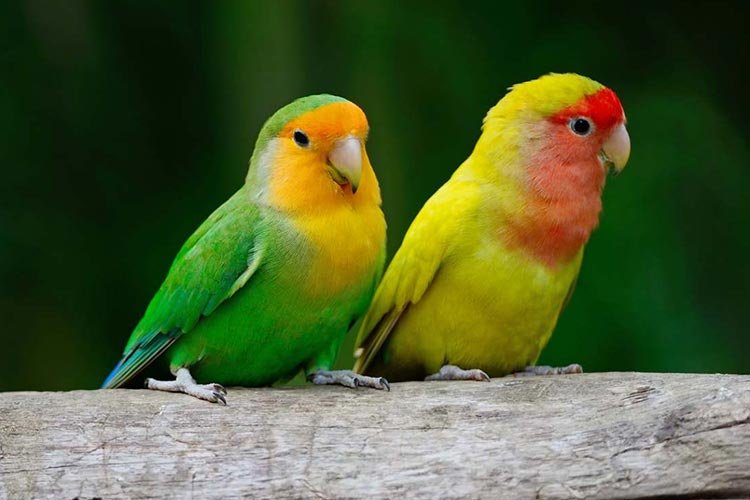
Lovebirds are small, colorful, and affectionate parrot species that belong to the genus Agapornis. There are nine species of lovebirds, and they are native to Africa and Madagascar. Lovebirds are known for their strong bond with their mates, which has led to their name. They are social birds that often live in small flocks in the wild.
Lovebirds make popular pets because they are small, easy to care for, and can form a strong bond with their human caregivers. They are also intelligent and curious, making them entertaining pets to have around. However, they do require a good deal of social interaction, mental stimulation, and a proper diet to stay happy and healthy.
Types of lovebirds
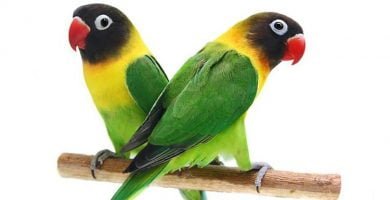
Black-masked lovebird
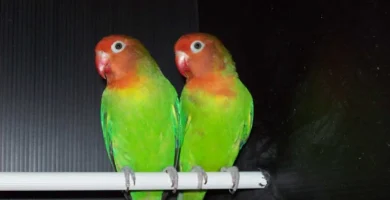
Lilian’s Lovebird

Black-cheeked lovebird
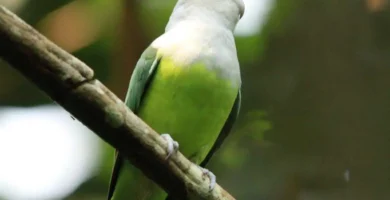
Madagascar lovebird

Red-headed lovebird
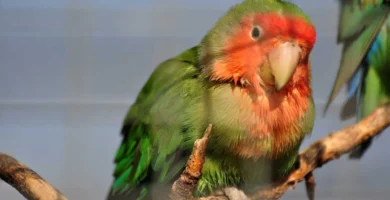
Rosy-faced Lovebird

Black-collared lovebird
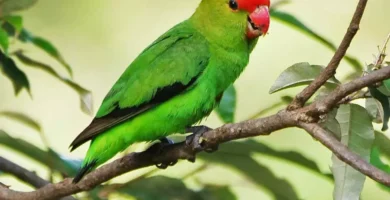
Black-winged lovebird
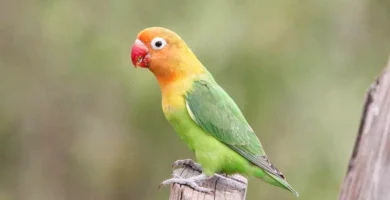
Fischer’s lovebird
Rosy-Faced Lovebird
The Rosy-Faced Lovebird, also known as Peach-Faced Lovebird (Agapornis roseicollis) is the most common species kept as pets. They have vibrant green, blue, and red plumage and a distinctive peach-colored face. They are native to the arid regions of southwestern Africa.
Black-Masked Lovebird
Also known as the Masked or Yellow-Collared Lovebird (Agapornis personatus), these lovebirds are native to Tanzania. They have a black face, green body, and yellow collar, giving them a striking appearance.
Fischer’s Lovebird
Fischer’s Lovebirds (Agapornis fischeri) are a popular pet species, known for their bright green, yellow, and red feathers. They are native to Tanzania and are considered near threatened in the wild due to habitat loss and trapping for the pet trade.
Black-Cheeked Lovebird
The Black-Cheeked Lovebird (Agapornis nigrigenis) is native to Zambia and has striking black cheeks, green body, and red beak. This species is considered vulnerable due to habitat loss and illegal trapping.
Lilian’s Lovebird
The Lilian’s Lovebird (Agapornis lilianae), also known as Nyasa Lovebird, is native to Malawi, Mozambique, and Zimbabwe. They have a green body, red forehead, and orange collar.
Madagascar Lovebird
The Madagascar Lovebird (Agapornis canus) is a small parrot species with a grey head and green body. They are native to Madagascar and are one of the smallest lovebird species. They have a grey head, green body, and red beak, and it’s also known as Grey-Headed Lovebird.
Black-Winged Lovebird
Also known as Abyssinian Lovebird (Agapornis taranta), is native to Ethiopia and Eritrea. They have a green body, red forehead, and black face. This species is one of the larger lovebirds and is less common in captivity.
Black-Collared Lovebird
The Black-Collared Lovebird, or Swindern’s Lovebird (Agapornis swindernianus) is native to Liberia, Ivory Coast, and Ghana. They have a unique color pattern with a green body, black face, and blue collar. This bird species is considered vulnerable due to habitat loss and trapping for the pet trade.
Red-headed Lovebird
The Red-headed Lovebird (Agapornis pullarius), also known as the Red-faced Lovebird, is a small and vibrant lovebird species native to Africa. They are predominantly green with a bright red face and forehead, making them an eye-catching addition to any aviary. Like other lovebirds, they are social, intelligent, and enjoy living in pairs or small flocks.
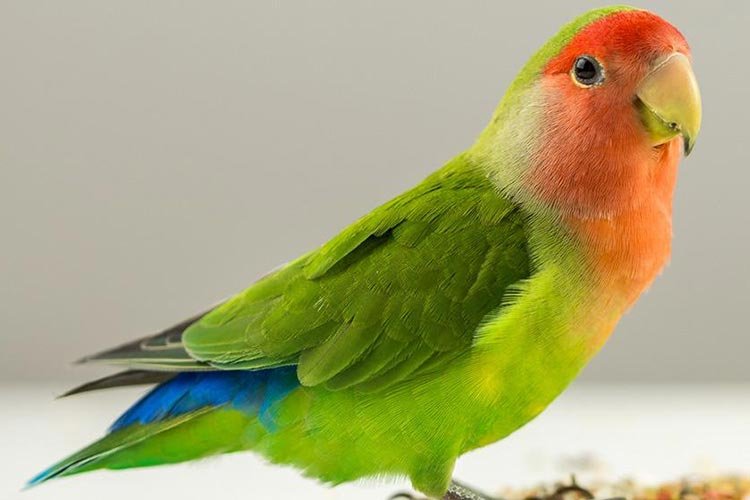
Lovebirds vs Parakeets
Lovebirds and parakeets are both small parrot species, but they have some differences. Lovebirds are typically more colorful and have a stockier build compared to parakeets. Lovebirds also have a shorter tail, a more hooked beak, and a distinctive eye ring. While both species can be affectionate and social, lovebirds are generally more active and require more attention from their owners.
Caring for Your Lovebirds
Housing
Lovebirds need a spacious cage that provides room for them to fly, play, and explore. The cage should have horizontal bars for climbing and several perches of varying sizes and materials to prevent foot problems. A nesting box is also recommended, as lovebirds enjoy hiding and sleeping in enclosed spaces.
Diet
A balanced diet is essential for lovebirds’ health. They should be fed a high-quality pellet or seed mix, supplemented with fresh fruits and vegetables. Be sure to provide clean water daily and remove uneaten food to prevent bacterial growth. Some safe fruits for lovebirds include strawberries and watermelon.
Social Interaction
Lovebirds are social birds that require regular interaction with their owners or other lovebirds. They can become stressed and develop behavioral issues if left alone for long periods. It is important to spend time with your lovebirds daily, playing with them and providing mental stimulation.
Toys and Enrichment
Lovebirds are intelligent and curious animals that need a variety of toys and activities to stay mentally stimulated. Offer them toys made from wood, rope, or plastic, as well as foraging toys that encourage problem-solving. Rotate toys regularly to keep your lovebirds interested and engaged.
Health and Well-being
Regular health check-ups with an avian veterinarian are essential for your lovebirds. Signs of illness can include changes in behavior, appetite, or droppings. Maintain a clean living environment and provide a balanced diet to help prevent health issues.
Breeding Lovebirds
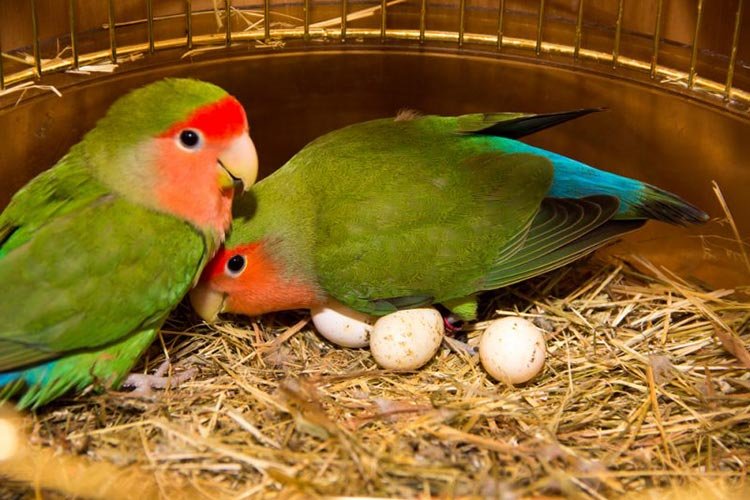
Preparing for Breeding
If you plan to breed lovebirds, it is essential to ensure that your birds are healthy and well-nourished. A proper diet, including calcium supplementation, is crucial for egg production and chick health. Make sure that the breeding pair is compatible and stress-free, as lovebirds can be picky about their mates.
Nesting Box
Provide a nesting box for your lovebirds, as they prefer to lay their eggs in a secure and enclosed space. The box should be large enough for the female to move comfortably and have a small entrance hole to prevent other birds from entering.
Breeding Season
Lovebirds usually breed during the warmer months, but in captivity, they may breed year-round. During the breeding season, females will lay between 3 to 6 eggs, which will hatch after approximately 21 to 25 days of incubation.
Raising Chicks
After hatching, lovebird chicks are entirely dependent on their parents for food and warmth. The parents will feed them regurgitated food until they are about 5 to 6 weeks old. At this age, chicks will start to explore their surroundings and learn to eat solid food. Lovebird chicks will be fully weaned and independent at around 8 to 10 weeks of age.
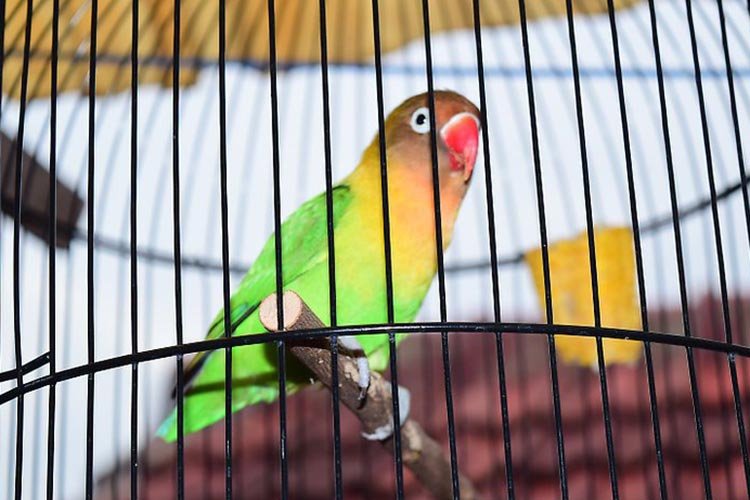
Lovebirds lifespan
The lovebirds’ lifespan can vary depending on factors such as their living conditions, diet, and overall health. In general, lovebirds live between 10 to 15 years, although some species can live up to 20 years with proper care. A single lovebird, well cared for in captivity, may live longer than its counterparts in the wild, where their lifespans can be shortened by natural predators, disease, or environmental factors.
Many lovebird species, such as Fischer’s lovebirds, are listed as least concern in terms of conservation status, meaning they are not currently threatened or endangered. However, some species, like black-cheeked lovebirds, face more significant threats to their populations in the wild. In contrast, feral populations of certain species like the rosy-faced lovebird, also known as the peach-faced lovebird, have become established in regions outside their native range, adapting well to new environments.
When keeping lovebirds as pets, it’s essential to provide them with a suitable living environment to ensure their health and longevity. Although lovebirds can be housed in the same room with other bird species, it’s crucial to monitor their interactions and separate them if signs of aggression or stress appear. Spending too many hours in an overcrowded or stressful environment can negatively impact a lovebird’s health and reduce their lifespan.
By providing a safe and comfortable living space, a balanced diet, and proper care, you can help your lovebirds live a long and fulfilling life.
Lovebirds as Pets
Are Lovebirds Good Pets?
Lovebirds, as one of the smallest parrot species, can make wonderful pet birds for the right person. They are intelligent, playful, and affectionate animals that can form strong bonds with their owners. However, most lovebirds do require a significant amount of time, attention, and care to thrive.
Hand Raised vs. Wild Caught
Hand raised lovebirds are generally easier to tame and bond with, as they have been socialized with humans from a young age. Wild caught lovebirds may be more challenging to tame and may take longer to adjust to their new environment. It is essential to purchase your lovebirds from a reputable breeder or rescue organization to ensure they have been raised ethically and responsibly.
Do Lovebirds Talk?
While lovebirds can mimic human speech, they are not known for their talking abilities like some larger parrots. However, they can learn to whistle and mimic simple tunes. Lovebirds tend to be more focused on socializing with their owners and other pets, so their ability to communicate through whistling and mimicking tunes is an added bonus. Although their talking abilities may be limited, they still thrive on human interaction and can form strong bonds with their owners.
Can Lovebirds Eat Strawberries and Watermelon?
Yes, lovebirds can eat strawberries, watermelon, and even native figs as part of their diet. These fruits provide essential nutrients and can be an enjoyable treat for your lovebirds. Be sure to remove any seeds and wash the fruit thoroughly before feeding. While fruits can be purchased from a pet store or local market, it’s important to remember that lovebirds in the wild eat fruit native to their geographic region.
When feeding your lovebirds fruits, ensure that they also receive balanced nutrition from other sources to avoid an inadequate diet that could lead to nutritional deficiencies. As more lovebirds become part of families around the world, it’s vital to provide them with a diverse and nutritionally complete diet to ensure their health and happiness.
Lovebirds for Sale
When looking for pet birds, specifically lovebirds for sale, it is important to research breeders and pet stores to ensure that they are reputable and ethical. Adopting lovebirds from a rescue organization is also an excellent option, as these birds often need loving homes.
How Much Do Lovebirds Cost?
The cost of lovebirds can vary depending on factors such as their age, color mutation, and whether they are hand raised or not. On average, lovebirds can cost anywhere from $50 to $200 or more. It is essential to factor in the cost of a proper cage, toys, food, and veterinary care when considering the overall cost of owning lovebirds.
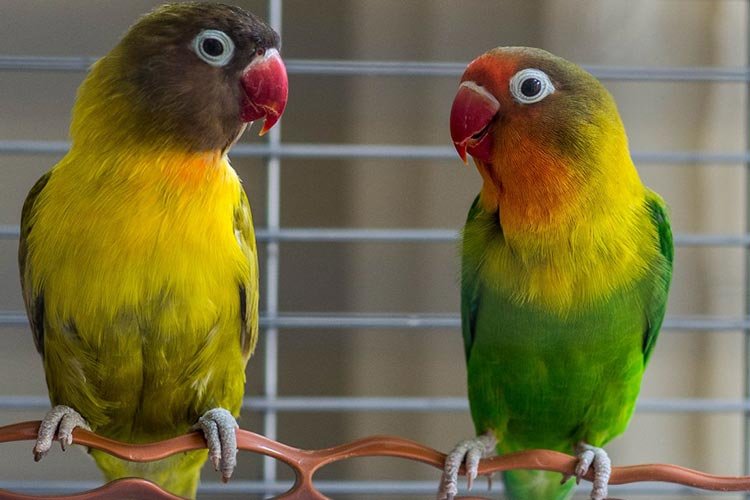
Fun facts about Lovebirds
- Lovebirds, affectionately known as “love birds”, earned their name due to their strong monogamous bonds: These affectionate birds often form lifelong partnerships, sitting closely together and preening each other’s feathers, giving the appearance of “love-struck” behavior.
- Lovebirds are known for their paper-shredding antics: Many lovebirds have a unique habit of shredding paper or leaves into long strips, which they then tuck into their feathers or carry in their beaks to create a makeshift nest.
- Lovebirds can master puzzle toys: Due to their high intelligence and curious nature, lovebirds enjoy problem-solving and can figure out how to open puzzle toys to access treats hidden inside.
- Lovebirds have a vast range of vocalizations: These little parrots can produce an impressive variety of sounds, from high-pitched chirps to soft, melodic whistles.
- Some lovebirds exhibit a rare genetic mutation called “lutino”: This mutation causes a lovebird’s feathers to appear bright yellow or orange instead of their typical green, giving them a striking appearance.
Conclusion
Lovebirds, originally wild birds with feral populations, are captivating and affectionate aviary birds that can bring joy and companionship to their owners. With their vibrant colors, lively personalities, and strong bonds, it’s no wonder these small parrots, often found at bird breeders and pet stores, are so beloved. Their colorful plumage and the unique sound lovebirds make add to their charm.
If you’re looking to see lovebirds in a controlled environment where they can thrive and interact with other bird species, the San Diego Zoo is an excellent destination. This world-renowned zoo offers a variety of aviary habitats that showcase these beautiful and charming birds in all their colorful splendor.
By providing proper care, attention, and love, you can ensure a long and happy life for your feathered friends.
